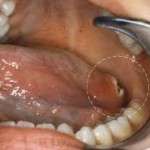December 6th, 2010
Smoke and Mirrors
Greg Bratton, MD


I saw two patients last week that really made me scratch my head.
The first was a 15-year-old girl who was smoking a pack of cigarettes daily and had been for 3 years; the other was a 26-year-old man who smoked 1.5 packs daily for 10 years and had recurrent oral ulcers and bleeding gums. In sitting and talking with these two patients, it became blatantly obvious that the risks of tobacco use – such as developing emphysema or lung cancer – didn’t scare them. Both said, matter-of-factly and without hesitation, “I’ll worry about that when I have symptoms.”
 As you might imagine, I was at a loss for words. For years, schools, billboards, doctors, and the government have been trying to educate Americans about the ills that tobacco use can bring. Smoking has gone from being the cool thing to do to being socially unacceptable. Restaurants have banned indoor smoking sections, and ballparks, office buildings, and public venues have designated smoking areas that are far removed from the main flow. Society has recognized that smoking is bad, but, as evidenced by my patients, our youth are still struggling with the concept.
As you might imagine, I was at a loss for words. For years, schools, billboards, doctors, and the government have been trying to educate Americans about the ills that tobacco use can bring. Smoking has gone from being the cool thing to do to being socially unacceptable. Restaurants have banned indoor smoking sections, and ballparks, office buildings, and public venues have designated smoking areas that are far removed from the main flow. Society has recognized that smoking is bad, but, as evidenced by my patients, our youth are still struggling with the concept.
Recently, the FDA proposed implementing a new policy, beginning June 22, 2010, called the Tobacco Control Act, that would require the packaging of cigarettes to have “larger and more visible graphic health warnings” to depict the negative side effects of tobacco use. As you can imagine, this proposed change engendered a public outcry about the appropriateness of such images. Apparently, the thought of seeing what will happen instead of just hearing about what will happen with chronic tobacco use is repulsive and distasteful. I say we need to make this happen.
 To me, it can all be compared to owning a car. To most people, a car is a status symbol, a marker for how financially sound you are. People care how their cars look: maybe they add a few accessories, buy new rims, get a custom paint job, or even add gold trim. However, my bet is that 3000-mile oil changes, new spark plugs, tire rotations, and other standard maintenance items go undone because no one asks to look under the hood. The same is true of the body: As long as kids can look in the mirror and see “normal,” they don’t care about what is going on inside. As a primary care provider, it is my job to redirect their focus to their engines.
To me, it can all be compared to owning a car. To most people, a car is a status symbol, a marker for how financially sound you are. People care how their cars look: maybe they add a few accessories, buy new rims, get a custom paint job, or even add gold trim. However, my bet is that 3000-mile oil changes, new spark plugs, tire rotations, and other standard maintenance items go undone because no one asks to look under the hood. The same is true of the body: As long as kids can look in the mirror and see “normal,” they don’t care about what is going on inside. As a primary care provider, it is my job to redirect their focus to their engines.
We are in the business of prevention. This means routinely pushing for and obtaining routine colonoscopies, Pap smears, mammograms, prostate exams, and blood work. It is our job to do the “scheduled maintenance” for our patients and to advocate for a healthy lifestyle, even before any symptoms appear. In other words, we need to make it clear to our patients that, although their bodies look good, their engines could be failing fast. Sometimes, in order to get this message across, threatening a little future cosmetic damage can do the trick.
 Thus, when discussing smoking habits with my patients, I informed the teenage girl that her heavy smoking not only leads to lung cancer, bladder cancer, and other well known side effects, but also to bad breath, odor in her clothes, wrinkling of the skin on her face, staining of her teeth, infertility, and menstrual problems including irregular bleeding.
Thus, when discussing smoking habits with my patients, I informed the teenage girl that her heavy smoking not only leads to lung cancer, bladder cancer, and other well known side effects, but also to bad breath, odor in her clothes, wrinkling of the skin on her face, staining of her teeth, infertility, and menstrual problems including irregular bleeding.
 With the “too-cool-for-school” 26-year-old, I mentioned that he should have his oral lesions biopsied to rule out cancer, because if the lesions were malignant he could lose his tongue and lower jaw. Plus, I told him that he could be facing a future of impotence if he continues smoking at his current pace.
With the “too-cool-for-school” 26-year-old, I mentioned that he should have his oral lesions biopsied to rule out cancer, because if the lesions were malignant he could lose his tongue and lower jaw. Plus, I told him that he could be facing a future of impotence if he continues smoking at his current pace.
Sadly (but also thankfully), I think my message got through.

